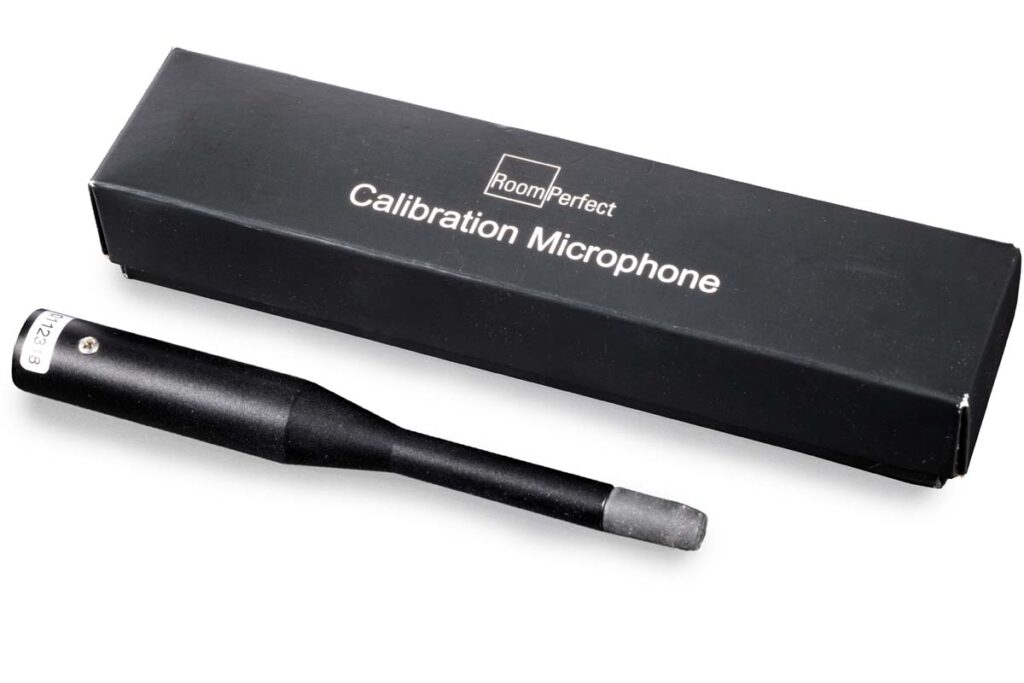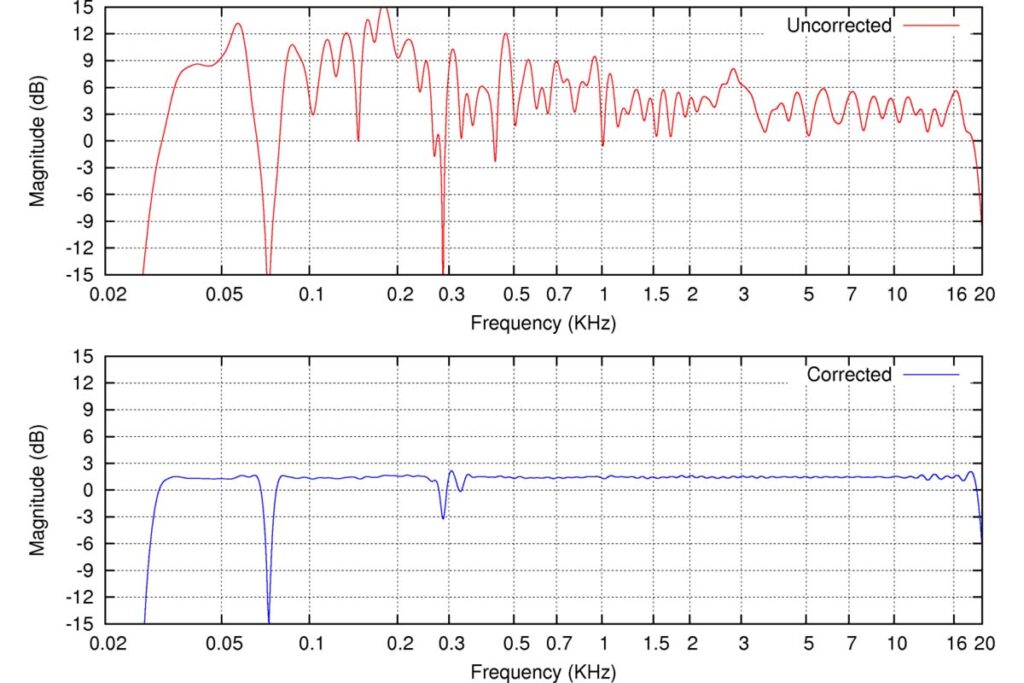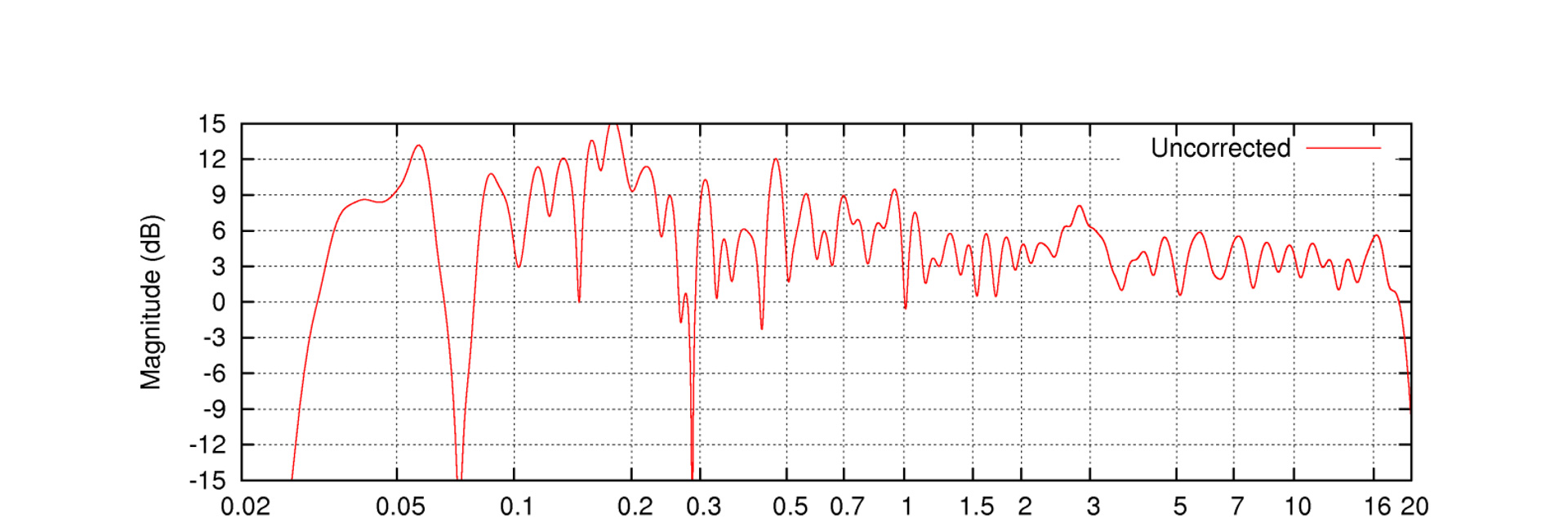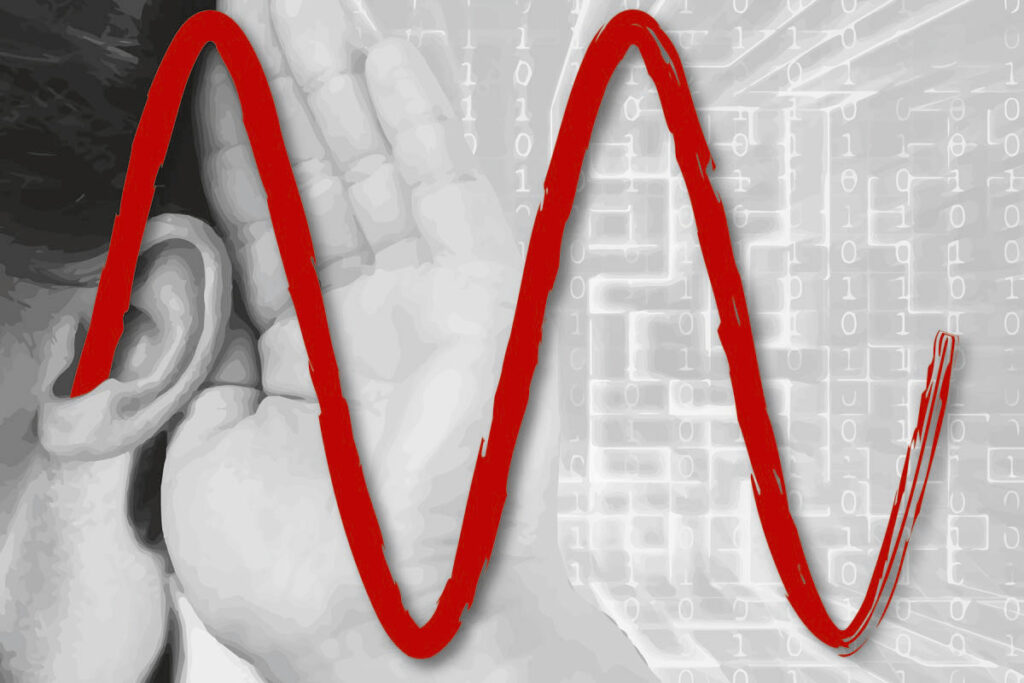The high-end components are wired up with the finest cables, the speakers are mounted on absorber feet, the diaphragms emit nothing but the most pristine, unadulterated musical information – only for the room acoustics of your living to come along and throw a big fat spanner in the works. Can the magical powers of zeroes and ones be the answer?
We’ve all heard the saying: the room is the biggest component – and when we say component, we usually mean problem source. Room modes and flutter echoes overlay the signal from the stereo system and “spice up” the music with a questionable mixture of booming bass and metallic, grating treble. In the studio, such problems can be effectively countered with acoustic modules, but in the living room such space-consuming measures are much less welcome. While strategically placing bookshelves or sprawling vegetation is something we can accept, our willingness to populate our own four walls with absorbers, diffusers and bass traps is typically much lower.
DSP: Powerful, but not Magical
Fortunately, we live in the digital age, where the manipulation of zeroes and ones seems to offer a solution to all our analog problems. And indeed, digital signal processors (DSPs) are powerful tools: they allow us to freely shape frequencies, phase and time response, with any number of points of application (i.e. filters) that we can adapt to our needs in terms of bandwidth and filter quality. However, before we set about smoothing out the frequency response with this acoustic miracle, we must bear in mind an important limitation: Room acoustic problems arise from the interaction between the speakers and the room – in other words, they occur after the sound has separated from the diaphragm. An equalizer, on the other hand, can only manipulate the signal within the chain, i.e. before it reaches the drivers. For this reason alone, DSP-based room calibration cannot eliminate problems with the room acoustics; we distort the music signal in such a way that it provokes them as little as possible.

Two conclusions can be drawn from this: The fewer tasks we set our DSP black box, the less intervention in the music signal is required and the better the end result will therefore be. A DSP therefore does not eliminate the need to set up the speakers carefully and to optimize the listening room in the physical domain at least to the extent that we can reconcile with habitability. On the other hand, less can sometimes be more: If we don’t completely erase an annoying frequency peak, but only lower it until it is no longer noticeable, the original music signal remains closer to the target – ultimately, the ear must always be the final judge. Another argument against too much intervention in the frequency response is the fact that room acoustic problems and thus their correction are dependent on the listening position: If you smooth out the frequency response at one point in the room, the supposed improvements may well make things even worse elsewhere.
Apples and Oranges
But let’s stay at our listening position for now: You can of course ask yourself whether it’s not just the end result that counts. If the speaker-room interaction leads to a distortion of the frequency response, won’t ironing out these deviations make everything right in the end? There is a small catch here: our hearing is not so easily fooled – it can distinguish between direct and reflected sound as long as the time offset between the two is at least five milliseconds. A little thought experiment: Let’s assume Hilary Hahn knows nothing better to do with her time than to play her violin for us in our listening room. The sound comes off her instrument unmanipulated and is then overlaid by the room reverb. If we could adjust the violin’s frequency response so that the end result corresponds to its timbre in an infinitely large empty space, the room would end up sounding like a violin and the violin would sound like a negative of the reverb. Our ear can unravel this, and I can promise you that you would not like the result.
EQ-based room correction should therefore not be carried out in the mid and treble range, but only in the bass and at most in the mid-bass. Exceptions here are resonance peaks: narrow-band, long reverberating frequency peaks that are only occasionally directly noticeable but reliably cause our ears to bleed. As our hearing is more sensitive to changes in the frequency response the wider a frequency band they cover, a narrow-band correction of such a peak will not change the sound balance much, but will make longer listening sessions much more pleasant.
Keeping the Basemant Clean
But if room correction doesn’t really work for the reasons mentioned above, then why is it OK to use in the bass? As the frequency decreases, the wavelengths become longer and longer and the phase difference between the direct and reflected sound components becomes smaller and smaller until the two behave more or less like a coherent sound event. Below a certain frequency, the wavelengths become so large that they no longer behave like sound events reflecting back and forth in the room, but rather stimulate the room as a whole to resonate. Depending on how large your room is and who you ask, this transition frequency lies somewhere between 200 and 500 Hertz. This is where physics does us a small favor, because it is right in this range, where we can intervene in the frequency response “with impunity”, that the biggest problems usually occur.
However, there are some important rules to follow here, too: Room modes result in boosts and cancellations. Boosts occur wherever the sound waves reflected from wall to wall meet in phase and add up. In other places, they collapse in antiphase, resulting in cancellations. While it makes perfect sense to cut the bass peaks, you should refrain from filling in the cancellations (aka nulls), as they are caused by the very same sound energy that the loudspeaker emits into the room. If you increase the level at this frequency, the reflected wave is amplified to the same extent and ultimately leads to exactly the same cancellation. So you don’t gain anything, but you’ll put unneccesary strain on your amplifier and the speakers, which only leads to unnecessary distortion with no additional benefit.

If we now smooth out the bass peaks without raising the lows, we must of course not forget that we are ultimately taking bass energy out of the reproduction. We can counter this with two approaches, which can also be used in combination. Firstly, we remember the maxim “less is more” mentioned at the beginning: instead of completely leveling out the bass boosts, it can make sense to lower them only until they no longer offend us; this way, the speakers still throw a good portion of the bass energy contained in the recording into the room and the punch in the bass is retained. In the second approach, we follow the maxim “more is more”: since we have removed the overall low-frequency energy, we can raise the entire bass range up to around 200 or 300 Hertz by one or two decibels after our corrections to compensate, depending on how much we have pushed down the bass peaks. Here, too, we play it by ear. A little tip at the end: If the presence range and treble sound annoyingly shrill, this is sometimes actually due to a lack of bass energy. It is therefore worth listening to the upper registers when adjusting the bass level.


